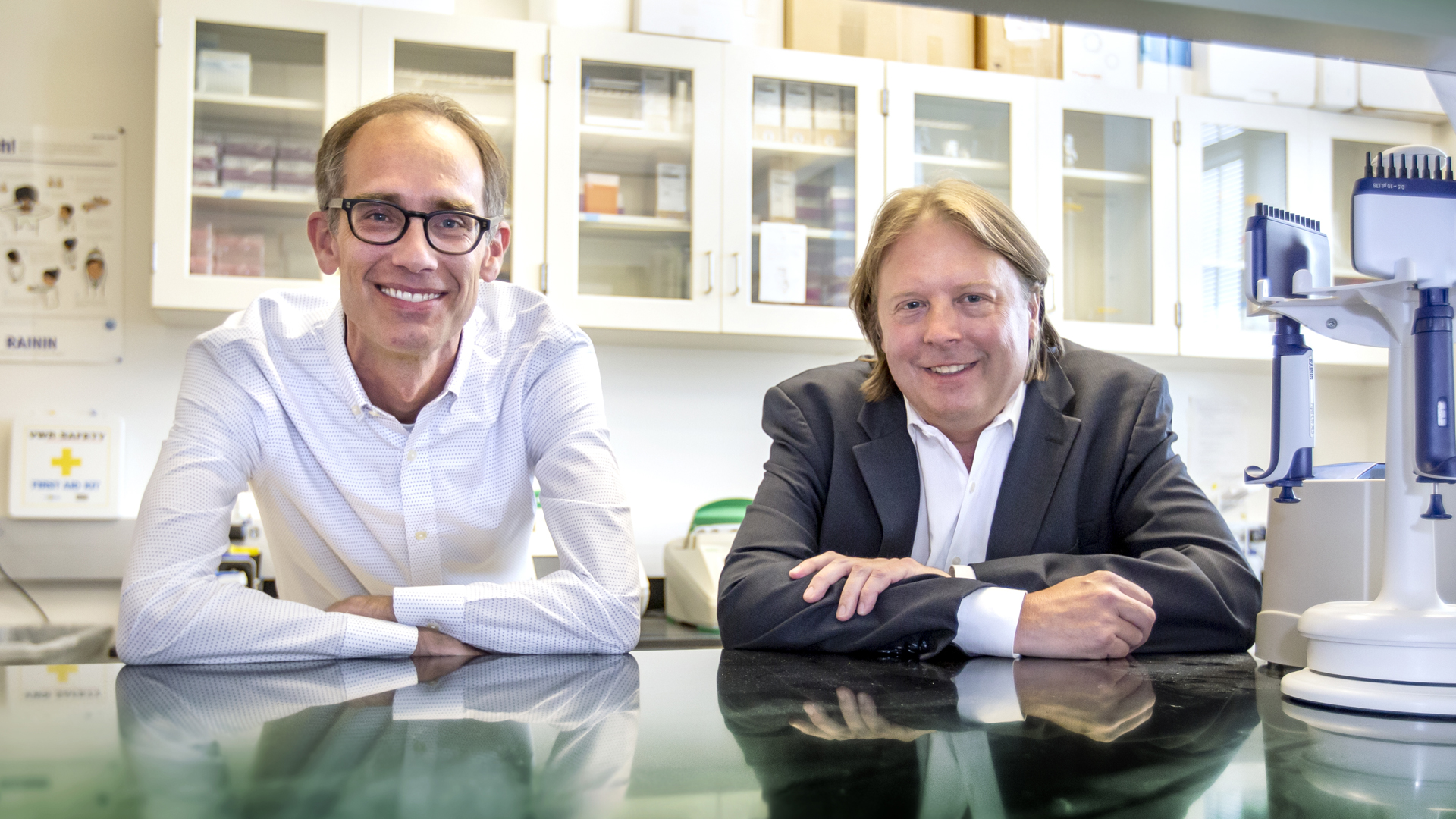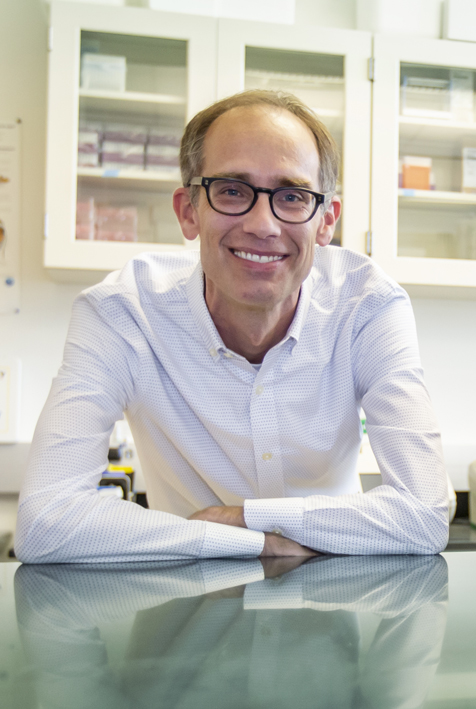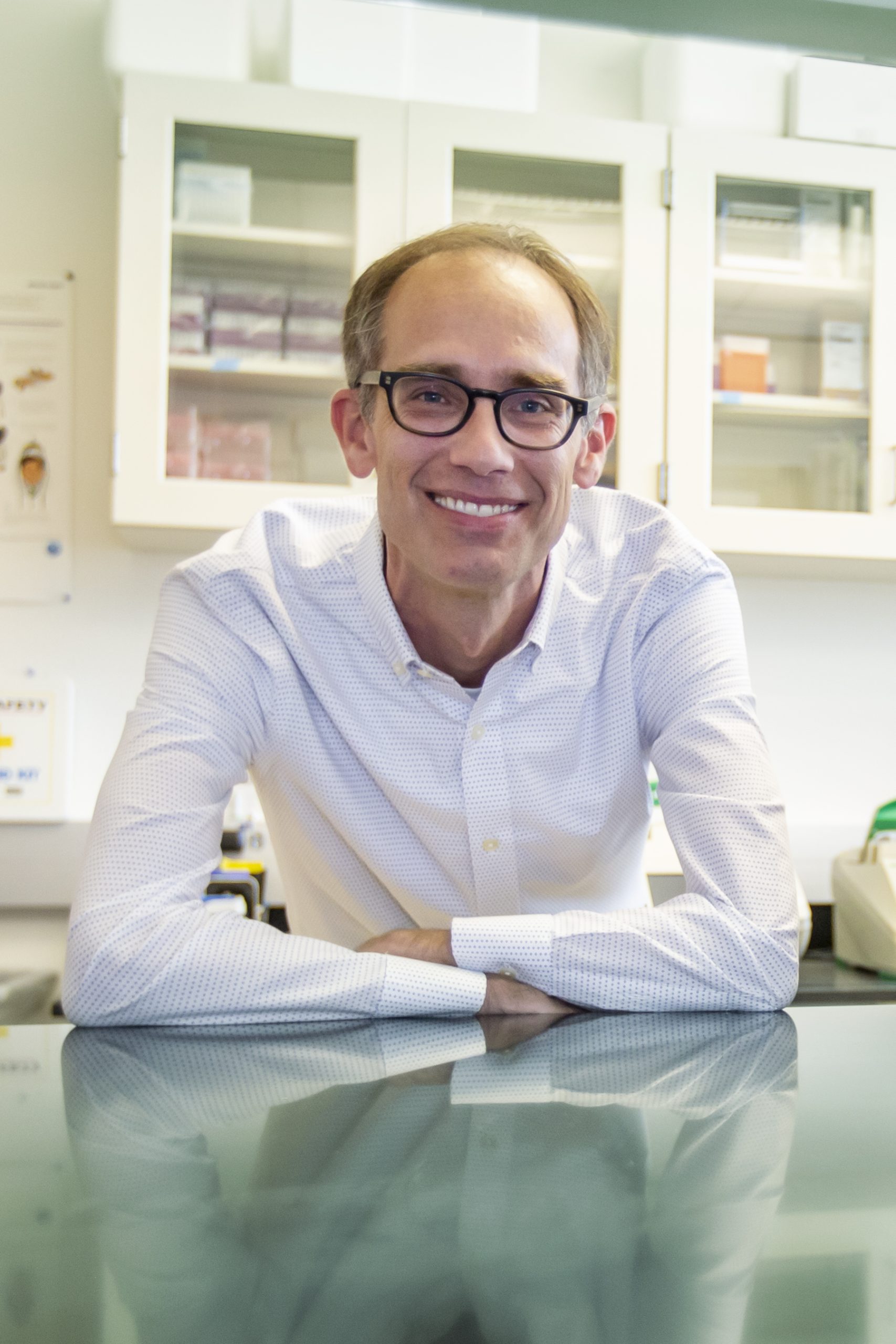CRACKING THE VIRAL CODE
CIPHER researchers take a collaborative approach to protect public health“We’ve proven the effectiveness of bioinformatics and genomics as scientifically important fields of study. Through CIPHER, we continue to build upon this work to have an even greater impact on society and public health.”
– Dan Janies – CIPHER Co-director

CRACKING THE VIRAL CODE
CIPHER researchers take a collaborative approach to protect public healthBy Phillip Brown
As the world continues to grapple with SARS-CoV-2, the highly transmissible coronavirus that has killed millions, who is looking ahead? It has been a century since the great flu pandemic of 1918, and the scientific community insists we won’t have that much time to prepare for the next one.
Fortunately, researchers Dan Janies and Adam Reitzel are up to the challenge; they are leading UNC Charlotte’s Center for Computational Intelligence to Predict Health and Environmental Risks, or CIPHER. Its mission, they explain, is to better understand the link between the world’s natural environment and how peoples’ interactions with animals affect human health.
“Two years ago, genomics was hardly mentioned, and now, with COVID, it’s talked about every day,” said Janies, the Carol Grotnes Belk Distinguished Professor of Bioinformatics and Genomics. “Historically, we go through epidemics and pandemics, and we think they’re done. But microbes come roaring back.”
Dan Janies: Digital Detective
Scientific researchers use myriad techniques in their search to discover the unknown. Some observe organisms in their natural environment, bringing back samples from the field for further investigations in labs. Most often Janies, rather than peering through a microscope, can be found analyzing the digital equivalent of reams of data. One of the world’s leading digital detectives, he is an expert in bioinformatics and genomics.
Janies’ command of zoonotic diseases, those that start in animals before jumping to humans, dates to 2002 when at The Ohio State University’s Medical School he began studying SARS (sometimes referred to as SARS-1). His work in genetic data analysis enabled researchers to trace SARS’s origins to bat species. This pioneering breakthrough continues to change how epidemiologists track viruses.

“Molecular epidemiology is altering how doctors and epidemiologists treat patients’ symptoms and classify and count the cases,” Janies said. “Identifying COVID variants — alpha, beta, delta, omicron — is based upon molecular technology and genetic sequencing.”
At Ohio State, Janies’ fascination with animals and viruses led to using genomics and phylogenetics to build evolutionary trees. SARS seemed to appear out of thin air, and researchers worldwide rushed to find its origins. He compiled an abundance of viral genomic data — from humans who contracted SARS, from animal hosts infected with SARS, even from animal hosts with coronaviruses related to SARS — to “root” SARS’s evolutionary tree.
“Rather than creating a tree to fit a hypothesis, I used data to better discover the evolutionary history of the origins of SARS — from bats to humans to civet cats,” said Janies.
COVID, caused by SARS-CoV-2 that originated in bats, is changing public perception on an increased need to explore the link between our natural environment, its organisms and human health; the North Carolina General Assembly awarded Charlotte $9 million to establish CIPHER on the fourth floor of the University’s Bioinformatics Building. The University also invested $10.5 million to retrofit the facility.
“We know agents of disease come from animals, but we really don’t know the drivers of zoonotic shifts,” Janies stated. “CIPHER is enabling teams of researchers to work together to study many organisms in many environments and how they interact with humans.”
Adam Reitzel: Collaborative Co-director
“I have an innate curiosity about how things work and where they come from,” said Adam Reitzel, professor of biological sciences.
A self-described small-town Midwesterner, Reitzel has an all-consuming quest for knowledge, a trait his mother can affirm. In fact, they recently discussed how his favorite childhood activities were reading and learning. Today, he’s a noted marine biologist who specializes in studying the phylum Cnidaria — sea anemones, corals and jellyfish. Quite an accomplishment, given his first glimpse of an ocean came at age 20.
He credits an exceptional high school biology teacher, Scott Lynn, for starting him on the path of inquiry-based scientific exploration. At Illinois Wesleyan University, faculty member Susie Balser cultivated his sense of discovery, encouraging him to apply for the National Science Foundation Research Experiences for Undergraduates program. This resulted in a life-changing chance to spend a summer at Western Washington University, studying coastal invertebrates. Balser also led a spring break trip to Florida’s Harbor Branch Oceanographic Institute for Reitzel and a group of classmates.

“We immersed ourselves in Florida’s coastal biodiversity, and Susie knew everything about these organisms,” said Reitzel. “I admire people who have this wealth of knowledge they share so freely and passionately.”
Reitzel brings his own passion and enthusiasm into his role as CIPHER’s co-director. His expertise in biodiversity and local adaptation, how organisms evolve in response to their environments, provides value to the scientific community as it grapples with how to respond to unprecedented changes across the globe that are impacting all species.
Taking the team approach to research
Charlotte’s strength, Janies and Reitzel agree, is its innovative and agile research culture that values an interdisciplinary approach to problem solving. Forward-focused in regard to bioinformatics and genomics, Charlotte created a department and Ph.D. program decades ahead of most universities.
“Collaboration makes science fun,” Reitzel stressed. “While research can be done individually, the results are better through teams. We ask better questions. We take better approaches. Discoveries happen faster.”
Phillip Brown is an Assistant Director of strategic content for University Communications.
“We’ve proven the effectiveness of bioinformatics and genomics as scientifically important fields of study. Through CIPHER, we continue to build upon this work to have an even greater impact on society and public health.”
– Dan Janies – CIPHER Co-director
By Phillip Brown
As the world continues to grapple with SARS-CoV-2, the highly transmissible coronavirus that has killed millions, who is looking ahead? It has been a century since the great flu pandemic of 1918, and the scientific community insists we won’t have that much time to prepare for the next one.
Fortunately, researchers Dan Janies and Adam Reitzel are up to the challenge; they are leading UNC Charlotte’s Center for Computational Intelligence to Predict Health and Environmental Risks, or CIPHER. Its mission, they explain, is to better understand the link between the world’s natural environment and how peoples’ interactions with animals affect human health.
“Two years ago, genomics was hardly mentioned, and now, with COVID, it’s talked about every day,” said Janies, the Carol Grotnes Belk Distinguished Professor of Bioinformatics and Genomics. “Historically, we go through epidemics and pandemics, and we think they’re done. But microbes come roaring back.”
Dan Janies: Digital Detective

Scientific researchers use myriad techniques in their search to discover the unknown. Some observe organisms in their natural environment, bringing back samples from the field for further investigations in labs. Most often Janies, rather than peering through a microscope, can be found analyzing the digital equivalent of reams of data. One of the world’s leading digital detectives, he is an expert in bioinformatics and genomics.
Janies’ command of zoonotic diseases, those that start in animals before jumping to humans, dates to 2002 when at The Ohio State University’s Medical School he began studying SARS (sometimes referred to as SARS-1). His work in genetic data analysis enabled researchers to trace SARS’s origins to bat species. This pioneering breakthrough continues to change how epidemiologists track viruses.
“Molecular epidemiology is altering how doctors and epidemiologists treat patients’ symptoms and classify and count the cases,” Janies said. “Identifying COVID variants — alpha, beta, delta, omicron — is based upon molecular technology and genetic sequencing.”
At Ohio State, Janies’ fascination with animals and viruses led to using genomics and phylogenetics to build evolutionary trees. SARS seemed to appear out of thin air, and researchers worldwide rushed to find its origins. He compiled an abundance of viral genomic data — from humans who contracted SARS, from animal hosts infected with SARS, even from animal hosts with coronaviruses related to SARS — to “root” SARS’s evolutionary tree.
“Rather than creating a tree to fit a hypothesis, I used data to better discover the evolutionary history of the origins of SARS — from bats to humans to civet cats,” said Janies.
COVID, caused by SARS-CoV-2 that originated in bats, is changing public perception on an increased need to explore the link between our natural environment, its organisms and human health; the North Carolina General Assembly awarded Charlotte $9 million to establish CIPHER on the fourth floor of the University’s Bioinformatics Building. The University also invested $10.5 million to retrofit the facility.
“We know agents of disease come from animals, but we really don’t know the drivers of zoonotic shifts,” Janies stated. “CIPHER is enabling teams of researchers to work together to study many organisms in many environments and how they interact with humans.”
Adam Reitzel: Collaborative Co-director

“I have an innate curiosity about how things work and where they come from,” said Adam Reitzel, professor of biological sciences.
A self-described small-town Midwesterner, Reitzel has an all-consuming quest for knowledge, a trait his mother can affirm. In fact, they recently discussed how his favorite childhood activities were reading and learning. Today, he’s a noted marine biologist who specializes in studying the phylum Cnidaria — sea anemones, corals and jellyfish. Quite an accomplishment, given his first glimpse of an ocean came at age 20.
He credits an exceptional high school biology teacher, Scott Lynn, for starting him on the path of inquiry-based scientific exploration. At Illinois Wesleyan University, faculty member Susie Balser cultivated his sense of discovery, encouraging him to apply for the National Science Foundation Research Experiences for Undergraduates program. This resulted in a life-changing chance to spend a summer at Western Washington University, studying coastal invertebrates. Balser also led a spring break trip to Florida’s Harbor Branch Oceanographic Institute for Reitzel and a group of classmates.
“We immersed ourselves in Florida’s coastal biodiversity, and Susie knew everything about these organisms,” said Reitzel. “I admire people who have this wealth of knowledge they share so freely and passionately.”
Reitzel brings his own passion and enthusiasm into his role as CIPHER’s co-director. His expertise in biodiversity and local adaptation, how organisms evolve in response to their environments, provides value to the scientific community as it grapples with how to respond to unprecedented changes across the globe that are impacting all species.
Taking the team approach to research
Charlotte’s strength, Janies and Reitzel agree, is its innovative and agile research culture that values an interdisciplinary approach to problem solving. Forward-focused in regard to bioinformatics and genomics, Charlotte created a department and Ph.D. program decades ahead of most universities.
“Collaboration makes science fun,” Reitzel stressed. “While research can be done individually, the results are better through teams. We ask better questions. We take better approaches. Discoveries happen faster.”
Phillip Brown is an Assistant Director of strategic content for University Communications.
